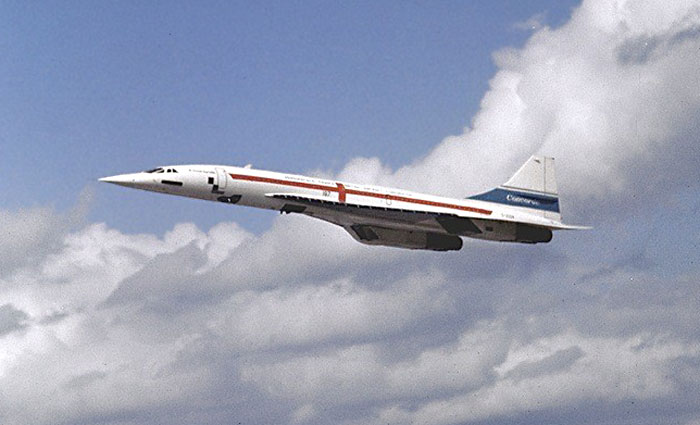
This week is the fiftieth anniversary of the first flight of Concorde: a great achievement by British and European engineering, which streaked across the skies like a meteor, but ultimately proved unable to adapt to changing conditions in the aviation world. Arguably the most famous commercial airliner in history, Concorde was a jewel in the crown by British aerospace, and a substantial contributor to the pedigree of the industry today.
Supersonic
Concorde was the fastest passenger airliner in history: flying at Mach 2 – or approximately 1,300 miles per hour – and at an altitude of 65,000 feet. It could fly from London or Paris to New York in only 3 hours and 30 minutes. This was one of its weaknesses, as only Air France and British Airways operated Concorde, and restrictions on supersonic flight over land meant it mostly flew the prestige Transatlantic route. Only fourteen aircraft in total were delivered, with seven each operated by the two airlines. (The Shah of Iran ordered two, persuaded by Michael Heseltine, but revolution saw the orders cancelled.)
The end of Concorde
In the end, Concorde was partly a victim of circumstances: the global oil price rise and stock market crash of the early 1970s dealt a blow to aircraft orders just as it was being introduced into commercial service. Later, the terrible crash of Air France Flight 4590 in Paris in 2000 – caused by debris left on the runway puncturing the airliner’s thinly protected fuel tanks – was a body blow to the aircraft’s viability. All 14 models were grounded, and a safety refit completed, but by the time of their reintroduction to service the aviation industry was undergoing a post-9/11 downturn, and their last flights took place in 2003 before retirement.
Its principal luxury was speed: and this was insufficient for the changing world of aviation. Luxury now is represented by the showers and double beds of Singapore Airlines or Etihad Airways. (The centre of gravity in aviation has also shifted, with the development of Dubai as a global hub, and the growing number of flights over the continental landmass of Eurasia.)
Engineers at Farnborough were crucial in the development of Concorde, working in the Royal Aircraft Establishment there, and it made a great contribution to the science of aerospace. Passengers were flown higher and faster than ever before, and the aircraft was highly engineered to achieve this. It was also the first cooperate European aircraft production venture, a legacy which has now been passed onto Airbus – successor to Aerospatiale, the French company involved.
Have we seen the last of supersonic commercial aircraft?
They may yet return to our skies. A number of companies, particularly Aerion Supersonic and Boom Technology, are working to develop small aircraft – business jet size, or around 40 to 60 passengers – which would travel at supersonic speeds and for which they believe there will be a market of perhaps 2,000 aircraft worldwide. There are big obstacles to this, not least global regulatory restrictions on noise and carbon emissions, but the companies involved are confident they can overcome these and produce profitable aircraft.
Concorde epitomised an age of elegance; of romance and grace. It was a key chapter in aerospace history, and contributed a great deal to the future of the aviation industry.





